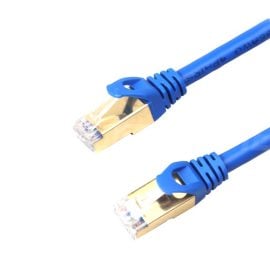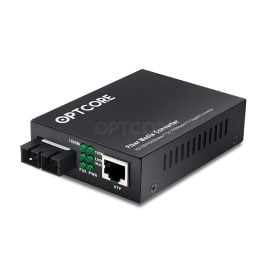Blog, Network Cabling
Wired vs Wireless Network: How to Choose?
If your home is being remodeled and the network engineer asks you to choose wired or wireless, you may be brain-dead. How do you choose a wired vs wireless network? The answer is based on your needs. For example, when buying clothing in a shopping center, customer A is concerned with the look and fit, customer B is concerned with the quality of the clothing and customer C is concerned with value for money.
This guide will explain the features and differences between wired and wireless networks so you can make the best choice for your needs.
Table of contents
Wired Network
Wired networks accomplish the transfer of network data between devices through physical cables. Three types of transmission media are used for wired networks: copper cable, twisted pair cable, and fiber optic cable.
Wireless Network
Wireless networks do not require cables to transmit data between devices. They utilize radio waves or infrared signals to transmit data and are divided into three main types: WiFi, Bluetooth, and cellular networks.

Wired vs Wireless Network: What is the difference?
1. Deployment Difficulty
Before deploying a wired network, you need to plan the location of cables, wall jacks, and hardware devices. Then, it would help if you excavated tunnels, which may take 1~2 months, depending on the scale and complexity of the deployment. In contrast, wireless network deployment generally takes only one to two days, and installing wireless devices can provide network access to various devices.
2. Mobility and Flexibility
Wired networks rely on cables for connectivity and are physically limited in location, making it difficult for devices to move around. A wireless network allows for flexible movement of network devices as long as they are within the coverage area. In addition, You don’t have to re-add cables, plan the layout, or enter the password when adding new devices to a wireless network.
3. Speed
A wireless network’s transmission speed is slower than a wired network’s. There are three reasons for this: First, the bandwidth of wireless networks is lower, although this deficiency may gradually disappear with the development of wireless technology. Second, the bandwidth of a wireless network is shared by multiple devices, so each device gets a lower share of the bandwidth. Third, the signal travels through the air and is susceptible to interference from walls, refrigerators, and other obstacles.
4. Reliability
Wired networks are more reliable. The signal does not fluctuate like wireless networks, your data is always stable over the cable. In contrast, a wireless network can slow down or disconnect suddenly as more devices are connected or if there is sudden signal interference.
| Feature | Wired Network | Wireless Network |
| Speed | Faster | Slower, but it is possible to achieve a speed equal to a wired network with the latest wireless technology |
| Installation | Complex and requires more time | Easy to install and requires less time |
| Mobility | Limited network equipment should be connected to cable | Not limited, can move freely within wireless network coverage |
| Bandwidth | Higher | Lower |
| Common Medium | Copper wires, fiber optic cables | EM waves, radio waves, infrared waves |
| Interference | Less | More |
| Reliability | More reliable, the signal is not easy to be interfered | More likely to be interfered with by obstacles. With the increase in users, the signal quality fluctuates greatly |
| Security | More secure because it is connected via a physical cable | More vulnerable to hacking and interception |
| Bandwidth Allocation | Each connected device has a total bandwidth | Each connected device shares the total bandwidth with other devices, so the more devices there are, the worse the network performance will be |
| Latency | Lower | Higher |
| Coverage | Limited by cable’s length | Limited by a signal range |
How to Choose?
The following considerations will inform your decision, and many people choose a mix of wireless and wired to maximize their personal needs.
Want easy connectivity?
Wireless networks work with various devices, such as desktops, laptops, game consoles, etc. Compared to a wired network, no additional wiring is required, just the purchase of a wireless device. You can easily connect to a wireless network by entering the correct password. Adding or upgrading is also easy.
Want a clean and tidy environment?
Wired networks require a lot of wiring, and each additional user device requires additional cables. As a result, a house or office area can become cluttered with intertwined wires. In contrast, wireless networks require only one wireless device to solve the problem of network communication between various devices. This helps keep the environment clean and organized.
Want a secure network?
Wireless networks are susceptible to hacking, tampering, and eavesdropping as the signal travels through the air. In contrast, wired networks are more secure, connecting directly to devices via physical cables.
Want no latency and high bandwidth?
Wired networks offer lower latency because signals travel faster over cables. In addition, wired networks provide higher bandwidth. In contrast, wireless networks have lower bandwidth and can be congested due to increased user devices accessing the network.
Want a lower-cost investment?
Wired networks require the purchase of large amounts of fiber optic or network cable and the opening of permanent connections such as wall jacks. And the longer it is laid, the more it costs. If you buy low-quality cables to save money, the quality of communication is significantly reduced. And more importantly, future maintenance and management costs will also increase. In contrast, wireless networks only require routers and access points.
FAQ
Q. What is the difference in coverage between wired and wireless networks?
A. A wireless network’s coverage is limited, usually a few dozen meters indoors. Moreover, the range will be smaller if it is blocked by obstacles. A wired network’s maximum transmission distance is the maximum cable transmission distance, generally within 100 meters. However, the wired network can extend the transmission distance by extending the connector or media converter.
Q. Which is more stable, a wired network or a wireless network?
A. Wired networks are usually more stable than wireless networks. Wired networks are more stable because they transmit directly through cables and are less susceptible to outside interference.
Q. Which scenarios are suitable for wired networks?
A. Wired networks are needed in data centers, enterprise server rooms, campus networks, and other scenarios requiring high network stability and data transfer speeds.
Q. Which scenarios are suitable for wireless networks?
A.Wireless networks are more suitable for daily office, home internet access, temporary office, or mobile office.
Q. Which is more energy efficient, wireless or wired?
A. Wired networks consume almost no energy through cable transmission. On the other hand, wireless networks use more power to transmit radio waves continuously to keep the signal broadcasting.
Conclusion
By reading this guide, you have learned that wired and wireless networks have advantages and disadvantages, and you can choose the type of network that best suits your point of need. In the FAQs above, you can see which scenarios correspond to picking that network type. If you have difficulty choosing, you can try a hybrid network, which makes up for the shortcomings of both types of networks but may be more costly.
Read more
- Maximum length of Ethernet cable: How Long Can It Be?
- WiFi 6 vs WiFi 7 vs WiFi 6E: What is the difference?
- FTTC vs FTTH vs FTTB vs FTTP: What is the Difference?
- What is WWAN? An Intro to Wireless WAN
- How to Check & Solve Ethernet Cable Problems












